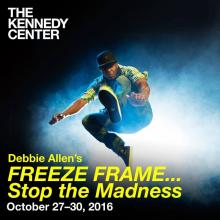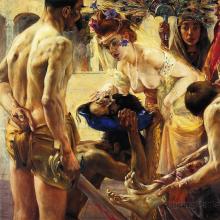dance
BLACK BALLERINAS have long perfected the art of altering pink tights and ballet shoes to match their skin tones. The night before a class with company members of the Dance Theatre of Harlem, the first black classical ballet company, pots of water with multiple tea bags boiled on the stove in my home, so I could dye my legwear and footwear. It was a process my mother swore by—and it worked.
In November 2018, nearly 200 years after pink ballet shoes were designed for white dancers, the company Freed of London released pointe shoes in colors that match Asian and black skin tones. It’s a step in the right direction, even though the ballet world continues to be characterized by whiteness.
It’s a powerful setup, and the girls’ (and their team’s) journeys are inspiring. But it’s hard to shake the feeling that Lipitz is more concerned with crafting a tidy, three-act narrative than with taking an honest look at who these girls are, and the issues they face.
The project which Allen spoke of, titled Freeze Frame…Stop the Madness, is a work of theatre written, choreographed, and directed by Allen that combines cinema, dance, and music into a stage performance inspired by the issues of race and gun violence in America. Freeze Frame opened at the Kennedy Center for the Performing Arts in Washington, D.C. on Oct. 27 and, on Oct. 24, Allen visited the Center for American Progress, in the nation’s capital, to discuss Freeze Frame’s creation and the impact she hopes the show will have on the U.S.
IN THE LECTIONARY PASSAGES for these weeks following Pentecost, we find God working in and through the ordinary: a shepherd boy, bread, dancing. In each passage God breaks through with incredible revelation; some promise, some challenge, some person unexpected. Not everyone in the passages notices. Paying attention is crucial. We’ll have to be open to being caught off guard, being surprised. The Holy Spirit gives us eyes to see. As we engage in leadership and ministry these weeks, what we are sure to find is Jesus showing up in all the places we might not expect, when we’re washing dishes, driving in the car, eating a meal. And we certainly don’t expect him in the faces of the white poor, in the lives of racially profiled black youth, or in the stories of the undocumented.
We bring into worship our vestments, our commentaries, our manuscripts. God speaks through these—no surprise there. But God grips us in these unexpected places. These are what we should carry with us into worship every Sunday. But we will need more than eyes to make them preach; we’ll need power. The Holy Spirit gives that too. It makes the heart come alive. The gospel artist Fred Hammond said it best: “When the Spirit of the Lord comes upon my heart, I will dance like David danced!” Dancing and singing shape the heart of God’s new community, for joy, for freedom, for hope. May we be open to the Spirit’s vision and boldness!
OUR BODIES AND the land are one. Move the earth with your body, dance on it, farm in it, play with it; our final return to it is sacred. The soil is made of clay, like you and me—hydrocarbon molecules, layers of geological and muscular formations, alive. The soil, mountains, and valleys are layered with time like our layered muscle tissue. We dance on the earth in the face of death, for the healing of ourselves and the healing of the land, connected as farmers, dancers, painters, musicians, and lovers of the goodness of the good green earth moving through lament. Our bodies and the earth are one and their healing and grieving are interconnected.
January 2011, around the corner from my house, Anjaneah Williams was murdered, across the street from Sacred Heart Church, pierced in the side, at 2 p.m., walking out from a sandwich shop. It was a Thursday. She died six hours later at Cooper Hospital in the arms of her mother, before the children who deeply loved her. One of the gunman’s stray bullets shot across the street through the stained glass at Sacred Heart. Anjaneah’s death reverberated in the air, an exploding, echoing canyon; a screaming mother in a vacuum, unheard and deafening. Her murder was one of 40 in the neighborhood in the near half-century since the shipyard closed. Forty people on the sidewalks, on the lots where houses once stood, in a neighborhood with 28 known environmentally contaminated sites.
WHEN I FIRST started attending the Church of the Apostles in Fairfax, Va., we had no church building and met in the cafeteria of an elementary school. There were about 50 of us and a brand new priest, Rev. H. Lawrence Scott (“Call me Renny”). It was an Episcopal church in Fairfax County in the 1970s. Really, how much trouble could I get into?
What I didn’t know was that it was a charismatic, Bible-believing, tongues-speaking church. The praise band led us in worship. We sang and raised our hands. There was speaking in tongues and interpretation.
When I committed my life to Jesus in October 1977, I was sitting in the living room with Renny and his wife, Margaret. We had lunch. We talked. I disagreed with them about this Jesus stuff. We talked some more, and I was shocked to find myself saying “yes” when Renny asked if I was ready to commit my life to Jesus. I just said sure—then Renny made me pray. I remember walking to the car and having a brief conversation with God, the culmination of which was that I said I would never be a missionary to Africa. It’s funny what I thought were the key questions then.
Because I am an all-or-nothing person, I threw myself entirely into this new life. Within a few weeks I was baptized in the Spirit. I went to a Bible study every week. When I heard you were supposed to have a quiet time, I did that religiously. Every morning I sat and waited on God: Bible reading and prayer, other spiritual reading, and index cards to help me remember. Every morning for years I got up very early and met with Jesus in the quiet before dawn. Between my study and the praise songs we sang at church, I learned hundreds of scriptures by heart.
When Harper was born we decorated the nursery in a Noah’s Ark theme…images of Noah and of animals entering a large wooden boat two-by-two. It’s a common enough decorating scheme for kids' rooms.
I mention it because this week at Bible study we discussed how weird it is that the beheading of John the Baptists isn’t a common decorating scheme for kid’s rooms.
Because this is just too gruesome a tale to show up on rolls of juvenile wall paper.
In case you missed the details, here’s what happened:
So Herod is the ruler of the region, and while vacationing in Rome he gets the hots for his brother’s wife who he then marries. John the Baptist, then suggests that maybe that’s not ok.
Now, Herod likes John, as much as anybody can like a crazy bug-eating prophet who lives outdoors and speaks consistently inconvenient truths. Truths such as it’s not ok to marry your brother’s wife, which, incidentally, is the truth that when spoken, got him arrested to begin with.
It also got John on the bad side of Herod’s new illegal wife Heroditas. She did not like John. Then when Herod throws himself a big birthday party his daughter-in-law Salome dances for him and all the other half-drunk generals and CEOs and celebrities who were there.
We don’t know the exact nature of her dance but we do know that it “pleased” Herod enough that he offered to give her anything she wanted up to half of his kingdom. So, you know, I don’t think it was the Chicken dance.
Mad Men meets Sesame Street, the documentary film Mister Rogers & Me, electric bicycles, a new Ben & Jerry's flavor, and an impressive glowing Japanese dance team.
The "sermon" consisted of reflections by five participants from different regions and traditions who were attending the Global Christian Forum for the first time. They each spoke of the joy, and often the surprise, in what they discovered here -- some of them interacting with delegates from Christian traditions they barely knew even existed.
The unity of heart and Spirit they experienced at the forum had a profound effect, they said. Emily Obwaka of Kenya, a staff member from the Association of Evangelicals in Africa, whom I met on the bus the first day of the forum, was one of those who shared. She said the forum felt like "a preamble to heaven." Such sentiments might seem excessive but they were not uncommon among the 287 forum participants from 65 countries. Joy and affirmation were among the greatest takeaways from the five-day gathering.




